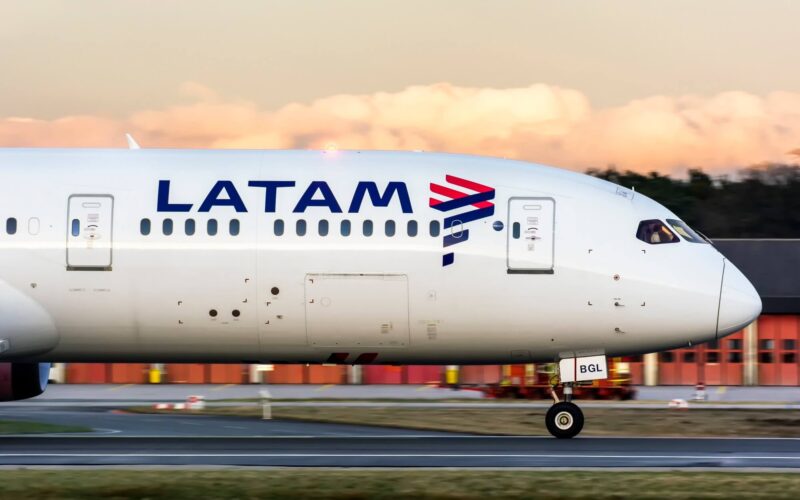Further details have emerged about a mid-air incident involving a LATAM Airlines flight from Sydney to Santiago via Auckland on March 11, 2024. As previously reported by AeroTime, around 50 people were injured after a sudden drop of the aircraft while at cruising altitude on the Sydney to Auckland leg, in what the carrier initially described as a “technical issue”.
The aircraft involved in the incident, a Boeing 787-9 registered CC-BGG, had departed Sydney (SYD) at 11:44 on the morning of March 11, 2024, heading for Auckland (AKL) in New Zealand with 263 passengers. Flight LA800 was due to make a short technical stop in Auckland before continuing its flight to Santiago de Chile (SCL), its final destination.
According to reports, the flight encountered a “sudden drop mid-air” with about an hour left of its flight resulting in 50 passengers and crew sustaining injuries. The aircraft continued to Auckland where it made a safe landing two hours and 42 minutes later at 16:26 local time. Following the event, LATAM Airlines confirmed that flight LA800 had suffered a “technical event during the flight which caused a strong movement”.
The aircraft is reported to have dropped abruptly and without warning before stabilizing. The unexpected and violent drop caused several passengers and crew on board to be thrown about the cabin, with several striking the ceiling panels.
Having recovered and analyzed data stored by the aircraft’s flight data recorder (FDR) and the cockpit voice recorder (CVR), aviation safety officials from New Zealand’s Transport Accident Investigation Commission have now revealed that the sudden movement of a flight deck seat is the key focus of the investigation. Based on the limited available information in the public domain, it is understood that the seat movement was “pilot induced, not intentionally induced” according to an unnamed safety official in New Zealand.
“The seat movement caused the nose to pitch down the angle of the aircraft,” said the source.
Another individual close to the investigation has told reporters that “the possibility of an electrical short circuit” was also under consideration.
Flight deck seats have their position controlled by electric motors allowing pilots to be close to the control while allowing users to find and fix a comfortable flying position. Should a seat suddenly slide forward, the occupant could fall against the control column, causing a dive.
One passenger on board told reporters in Auckland that it felt like a “miracle” when the pilot gained control of the plane after feeling it “free-fall” for what she thought was ten seconds. Another passenger said that following the incident, one of the pilots came to the passenger cabin “in shock” after the incident and recounted how the cockpit gauges “just blanked out” and how he “lost his ability to fly the plane”.

It is expected that Boeing will release a memo to all Boeing 787 operators regarding the incident. The fact that a cockpit seat mechanism is under suspicion could result in a global fleet-wide inspection of all seats on Boeing 787 flight decks, although such a move is yet to be confirmed by the US manufacturer. Boeing has so far refused to comment publicly on the matter.
In a statement, LATAM said it “continues to work in coordination with the authorities to support the investigation” and said it was not appropriate to comment on speculation that has circulated.”

